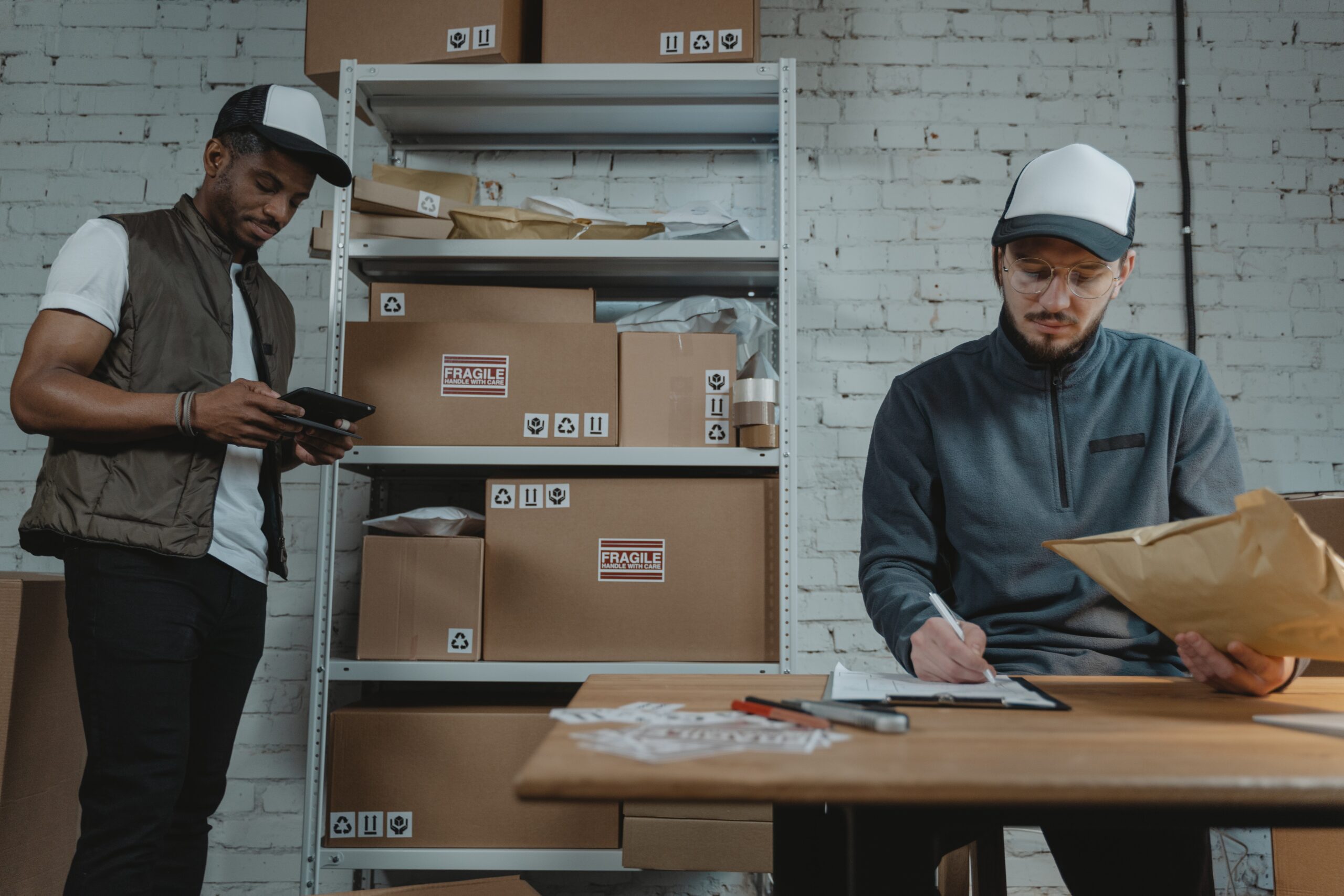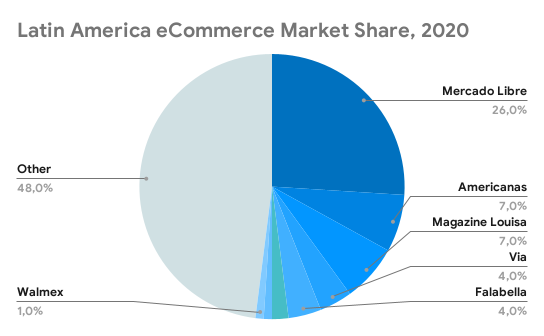5 hidden costs of selling online in Latin America

With over 650 million consumers, a 4.7 trillion USD economy, and the fastest-growing regional market for eCommerce, it’s no wonder you’re trying to expand your business into Latin America. This region has several large, emerging economies like Brazil, Mexico, Colombia, and Chile, with untapped opportunities to grow and reach new consumers.
However, selling in Latin America can prove to be a daunting task. Some may find it hard to grasp cultural differences and understand the Latin American consumer, which is critical for your marketing campaigns to succeed. Others might struggle with inefficient government bureaucracies, unpaved roads, inconsistent addresses, and other hurdles that keep them from delivering on time.
In any case, those who want to make it big in this market need to be aware of its challenges. Here are 5 obstacles online sellers often face in Latin America:
1. Last-mile delivery issues
Latin America still lags far behind countries like the US, Germany, or China when it comes to security, infrastructure, and the adoption of new technologies. As a result, last-mile deliveries in this region are longer and riskier.
For starters, most logistics providers don’t use route optimization, order processing, tracking, or inventory management technologies. While deliveries in the US are increasingly being automated with artificial intelligence and blockchain, Latin American companies still do things the old way: they use the phone to communicate with customers and drivers, they decide shipping routes manually on a map, and they register the movement of goods on a spreadsheet–or even with pen and paper.
Small, informal companies like these account for nearly 60% of last-mile deliveries in countries like Mexico, Argentina, and Colombia. Even though they offer lower costs than other shipping companies, they are far less efficient because they lack scale and rely on outdated technologies. Traditional express carriers like FedEx or DHL may be better at delivering on time, but their high delivery costs will make your products a lot more expensive to customers – you’ll be unable to compete in marketplaces.
Parcel delivery tends to be a lot easier in the main urban centers, despite traffic congestion. In rural areas, drivers frequently have to drive on unpaved roads with poor lighting and find themselves puzzled with inconsistencies in the postal systems, such as addresses that don’t exist or streets that have changed their names.
By far, the most intimidating aspect of delivering in Latin America is security. According to the Global Initiative Against Transnational Organized Crime, Latin American countries such as Colombia (#2), Mexico (#4), and Brazil (#22) are among the countries with the highest levels of criminality. Delivering in areas controlled by criminal organizations is out of the question: in 2021, DHL had to partner with the Mexican military to be able to send vaccines to some of these places.
Even in more secure areas, sellers delivering in this region always risk having their products stolen, especially at pickup point. Under no circumstances should you leave a package at a customer’s doorstep unattended. Though uncommon, theft is likely to occur at some point if your sales go up, so you make sure you get proper insurance.
2. Dealing with customs
According to a study made by the Inter-American Development Bank, an average import takes 8.5 days in Latin America, longer than the world average of 7.5 and the OECD average of 4.6. Brazil has the second longest import time after Venezuela, lasting 16.4 days on average. Strikes, protests, political standoffs, and other incidents may cause logistics disruptions and delays, even in countries with the most efficient customs services.
Most of the time, customs authorities may allow your products to enter the country and only charge tariffs when their price or weight is above a certain threshold. For example, in Brazil, you generally don’t pay duties for products that weigh less than 30 Kg and cost less than 50 USD, but if you do, you must pay a 60% tax rate.
However, in many cases, the decision on whether a product is taxed or not is subject to the discretion of the customs agents and can be difficult to predict. In practice, a seller can sometimes be taxed for importing toys under 30 USD, and then be able to enter an expensive household appliance without paying duties.
Sometimes, customs authorities in Latin America can be very strict on what types of products can enter the country. While Brazil and Argentina forbid the imports of jewelry and foodstuffs, Mexico doesn’t allow you to enter human-shaped dolls, such as Funko Pop! and Barbie dolls. Make sure your product catalog doesn’t include any banned items before you post it in a marketplace. For more information on country-specific regulations, you can check our FAQ page.
3. Cancellations and returns
Consumer protection laws tend to be quite strong in Latin America. Buyers have the right to cancel their purchase and receive a full refund up to seven days upon receiving the product in Brazil, or up to ten days in Argentina. If you fail to reimburse them within these deadlines, they may file a complaint against you with consumer protection agencies like Procon in Brazil or Profeco in Mexico.
Cancellations are one of the main sources of losses in cross-border eCommerce. Since most sellers can’t afford the reverse logistics necessary to send canceled items back to their home country, they usually dispose of these products. Customs authorities may hold these products for 30 days and then destroy them, whereas postal offices may lose them in their vast inventories.
Maintaining low cancellation rates should be one of your top priorities as an overseas seller, not only to avoid losses but also to improve your brand reputation and boost audience exposure in marketplaces. This can be done by optimizing your logistics operations to ensure you deliver on time, by training your customer support team to handle complaints and cancellation requests, or by checking that your products’ titles, images, and descriptions accurately describe the item that you’re selling.
4. Setting up legal entities
In order to remain liable to marketplaces and customers, you may be asked to register a legal entity in the country where you’re selling. This is quite common in marketplaces with few cross-border sellers, which might still be wary of doing business with overseas companies.
Latin American countries always have minimum statutory requirements that must be met by all firms, which involve additional costs. These include:
- Designating a legal representative or local director, to provide guidance on local laws and regulations as well as to sign documents on behalf of the company. In most cases, this individual has to be a citizen of the respective country.
- Establishing a fiscal address, which will be used by government authorities for official communications regarding taxes and other compliance matters. You’ll either have to acquire an office in that country or partner with a local company to use their address.
- Issue monthly and annual tax declarations with local authorities, which can be difficult to navigate for foreign firms. As in any other country, failing to present such declarations can result in penalties.
5. Standing out in the region’s top marketplaces
Marketplaces dominate Latin American eCommerce. Morgan Stanley estimates that the region’s 8 largest platforms account for 52% of its total market share, and expects them to continue growing in the coming years. According to data from Ebit-Nielsen, 78% of eCommerce market revenues in Brazil come from marketplaces.

Source: Morgan Stanley
By joining marketplaces like Mercado Libre, Americanas, Via, and Falabella, you can reach hundreds of millions of consumers, but only if you get noticed.
Although these websites generally allow you to register and post your products for free, and then charge you fees from 15% to 25% on the items sold, this doesn’t mean you’ll get maximum exposure from day one. Customers will initially have to navigate through several pages of a catalog or search for very specific keywords to be able to find your products.
Hence, the biggest challenge for sellers on these platforms is to stand out, as there are hundreds of other sellers and millions of other products to choose from. In order to win the Buy Box and receive more visits, you’ll need to do better than your competitors.
This means you’ll have to offer lower prices, shorter shipping times, invest in the right type of ads for your target audience, deliver on time, answer your client’s questions, and get better customer ratings. In some cases, like Mercado Libre, you can improve your exposure by paying higher fees.
Making it to the first three pages in a marketplace’s catalog generally involves months of hard work and substantial investments, and on average, less than one in four sellers manage to get there.
There’s an easier way to do this
For cross-border sellers, starting out in a new market is never simple. If you want to boost sales in Latin America, you’ll first have to register as a seller in multiple marketplaces, then create legal entities, find a suitable logistics partner, verify customs regulations, get insurance, track your orders, optimize deliveries, enhance customer service, localize your marketing strategy, outperform your competitors…
We’ve been there, and we know it can be overwhelming. Luckily, there’s a shortcut: by enrolling on our Seller Center and uploading your product catalog, you can start selling in the region’s top marketplaces in less than 24 hours, at no cost. You won’t need to take care of legal issues, marketing, customs, deliveries, or cancellations–we’ll do that for you.
Do you want to be part of Latin America’s eCommerce boom? Book a free consultation with one of our experts to see how you can maximize sales in this region.
SUBSCRIBE TO OUR NEWSLETTER
Gain access to the latest news and insights on e-commerce in Latin America.